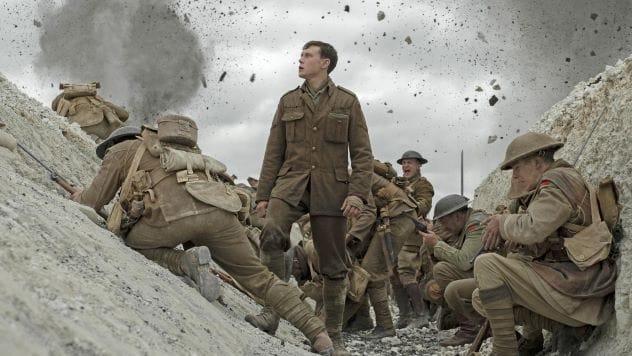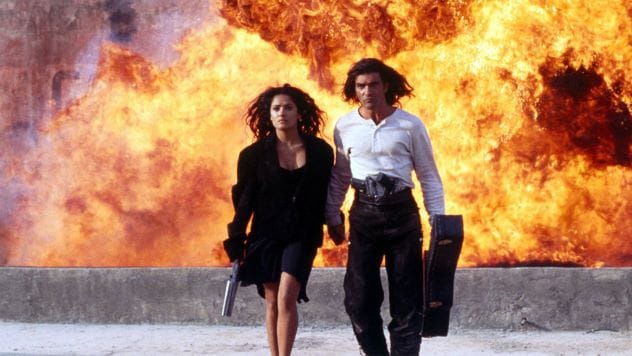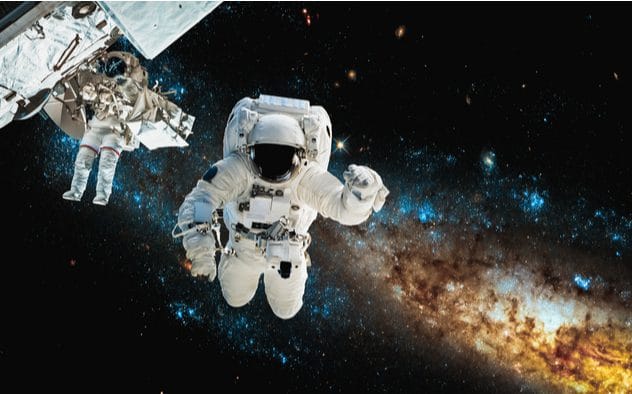Movies are our great escape, whisking us away to far-off lands, thrilling adventures, and dramatic encounters. But let’s be honest, sometimes Hollywood takes a few… liberties with reality. While we love the entertainment, it’s easy to pick up some quirky ideas about how the world works. Filmmakers aim to thrill, not always to educate, and that’s okay! But it’s fun to peek behind the curtain and see what’s real and what’s just movie magic. Get ready to dive into some classic cinematic slip-ups!
10. Violent Deaths: Not So Instant

In action flicks, a single gunshot or knife wound often means instant lights out. But here’s a reality check: humans are tougher than that. Instant death usually only happens if the brain, heart, or the cervical part of the spinal cord (in the neck) is hit directly.
If someone is shot or stabbed elsewhere, they’re more likely to bleed out, which takes time. And those super-fast poisons? Most real poisons take days, not moments, to be fatal. Also, movie corpses often look surprisingly peaceful. In reality, dead bodies can be pale, grayish, and develop an unpleasant odor, especially after a while. So, those detectives finding bodies tucked away in car trunks? They’d likely smell it before they see it.
9. Villains: The Usual Suspects?

Ever notice how often Russian and Arab characters are the bad guys in Hollywood movies? It’s not just your imagination. The trend of Russian villains kicked off after World War II, with the Soviet Union as the U.S.’s main rival. Even after the Soviet Union fell, Hollywood often kept Russia in the villain role.
Arab Muslims frequently get stereotyped too, often cast as terrorists, wealthy sheiks, or exotic dancers. This is sometimes called the “3B syndrome”: bombers, billionaires, and belly dancers. While the direct cause isn’t crystal clear, these roles were common even before 9/11, and that event unfortunately solidified the stereotype for many.
8. Warfare: Sound and Fury (Misrepresented)

Movie battles are often a symphony of chaos. You hear a gunshot, then see someone fall. In reality, bullets travel faster than sound. So, you’d see someone get hit before you hear the shot. And all that endless gunfire? Real battlefields aren’t always like that. Many soldiers don’t fire their weapons constantly, and rarely on full automatic – it just wastes ammo.
Movies also show battlefields as crowded places, even with camouflage. Real soldiers spread out to avoid being easy targets, and good camouflage makes them very hard to see. Lastly, actual combat is incredibly noisy and confusing. Soldiers can be disoriented, making communication a real challenge. Commanders might have to repeat orders multiple times to be understood.
7. Science: Hollywood vs. Newton

Hollywood loves to bend the rules of science. We’re not just talking about superheroes flying. Think about basic physics. When someone gets shot in a movie, they often fly backward dramatically. Newton’s third law (“for every action, there is an equal and opposite reaction”) means if a bullet had enough force to send someone flying, the shooter would also be thrown back, or at least have their wrist broken!
The same goes for explosions. Characters walk away from massive blasts with just a scratch. A real explosion powerful enough to toss someone through the air would likely cause severe internal injuries. And those fiery spaceship explosions in space like in Star Wars? In reality, an explosion in space would be a brief flash of light. You wouldn’t hear it (no air for sound to travel) and it wouldn’t burn (no oxygen for fire).
6. Space Travel: Not Quite a Joyride

Sci-fi movies often feature some pretty wild spaceship designs. Many look so outlandishly cool that, if they were real, they’d struggle to even lift off from Earth, let alone navigate the cosmos. And how astronauts zip around in space is another area where movies get creative.
Remember the movie Gravity? Sandra Bullock’s character travels from a wrecked shuttle to the International Space Station and then to a Chinese space station, all without using powerful rockets. In real space, this would be impossible because these objects are in different orbits. Moving between orbits requires serious rocket power – much more than a simple jetpack or a space shuttle’s thrusters can provide.
5. Dinosaurs: Jurassic Park’s Creative Liberties

Jurassic Park is a thrilling dinosaur adventure, but it’s not always a dinosaur documentary. For example, the movie shows the T-Rex as a fast runner with poor eyesight. Actually, T-Rexes likely had excellent vision, able to spot small prey from far away, much like an eagle. However, they were probably quite slow, with a top speed around 15 mph. So, you could likely outrun one in a car!
The film also took liberties with other dinosaurs. Velociraptors were actually about the size of a turkey, much smaller than their movie counterparts. The Dilophosaurus didn’t have venom or those neck frills. And the Spinosaurus, while big, wasn’t the unbeatable T-Rex-killer portrayed in the sequels. As for flying Pterosaurs carrying people? Unlikely. They would have struggled to land on trees, let alone lift a human.
4. Hacking: More Boring Than Bellini

In movies, hacking looks super exciting: fingers flying across keyboards, flashy digital maps, progress bars filling up, and voila! Access granted in seconds. Real-life hacking is usually far more complex and, honestly, pretty boring to watch.
Many real “hackers” don’t even write complex code; they might use phishing (tricking people into giving up passwords) to gain access. For those who do engage in technical hacking, it involves long, tedious tasks—not exactly primetime entertainment. Interestingly, some movies that did show more realistic hacking, like WarGames (1983) and The Matrix Reloaded (2003), actually caught the attention of governments, who worried about copycats.
3. Biometrics: The Living Touch

You’ve probably seen this movie scene: a spy chops off an enemy’s finger or plucks out an eye to bypass a biometric scanner. Dramatic, yes. Realistic? Not so much. Most biometric scanners are designed to detect living tissue.
A severed finger or a removed eye contains dead tissue, which a scanner wouldn’t recognize as valid. Plus, an eye quickly loses its shape once removed from the socket. By the time our movie hero got it to the scanner, it wouldn’t look much like a functional eye anymore. So, that trick is purely for the silver screen.
2. Africa: Continent, Not Country

Hollywood often paints Africa with a single, broad brush: a war-torn land of remote villages and poverty, lacking modern technology. This is a misleading picture. First off, Africa is a vast continent with 54 diverse countries. People there have access to the same modern technologies as anyone else around the globe.
Another common issue is the mixing up of African cultures and languages. For instance, a South African language might be used for a Rwandan setting (like in Hotel Rwanda), or a Ghanaian language in a Nigerian story (like in Beast of No Nation). While these details might slip past Western audiences, many Africans notice and find it quite jarring. And those “African accents” often adopted by Western actors? They can sound pretty off, even to Africans themselves.
1. Fistfights: The Unbreakable Hero

Movie heroes are tough. They can take punch after punch to the head and keep on fighting. On the rare occasion they do get knocked out, they’re usually up and about a few minutes later, ready for more action as if nothing happened.
In real life, repeated blows to the head are serious business and can lead to a subdural hematoma (burst blood vessels in the head). The risk is even higher for people over 35, which includes many action stars. There’s a reason professional boxers often retire in their 30s. Yet, we see actors well into their 40s, like Daniel Craig as James Bond in Spectre, shrugging off numerous headshots. Realistically, such impacts could cause severe brain injury or even death, especially if blows are to the back of the head or delivered with a weapon.
So, while movies might not always be textbooks, they’re a fantastic source of entertainment. Knowing these little inaccuracies just adds another layer of fun to the viewing experience. Next time you’re watching a blockbuster, see if you can spot any of these classic Hollywood blunders!
What other movie mistakes drive you crazy? Did we miss any big ones? Leave your comment below and let us know!










